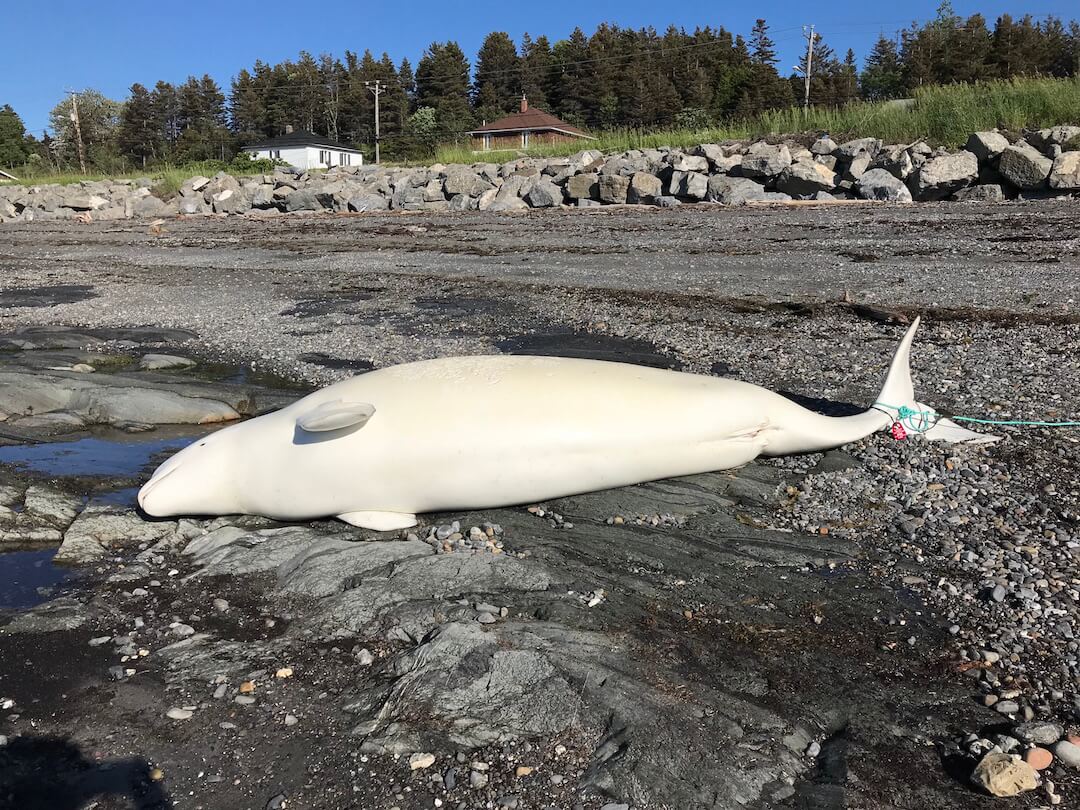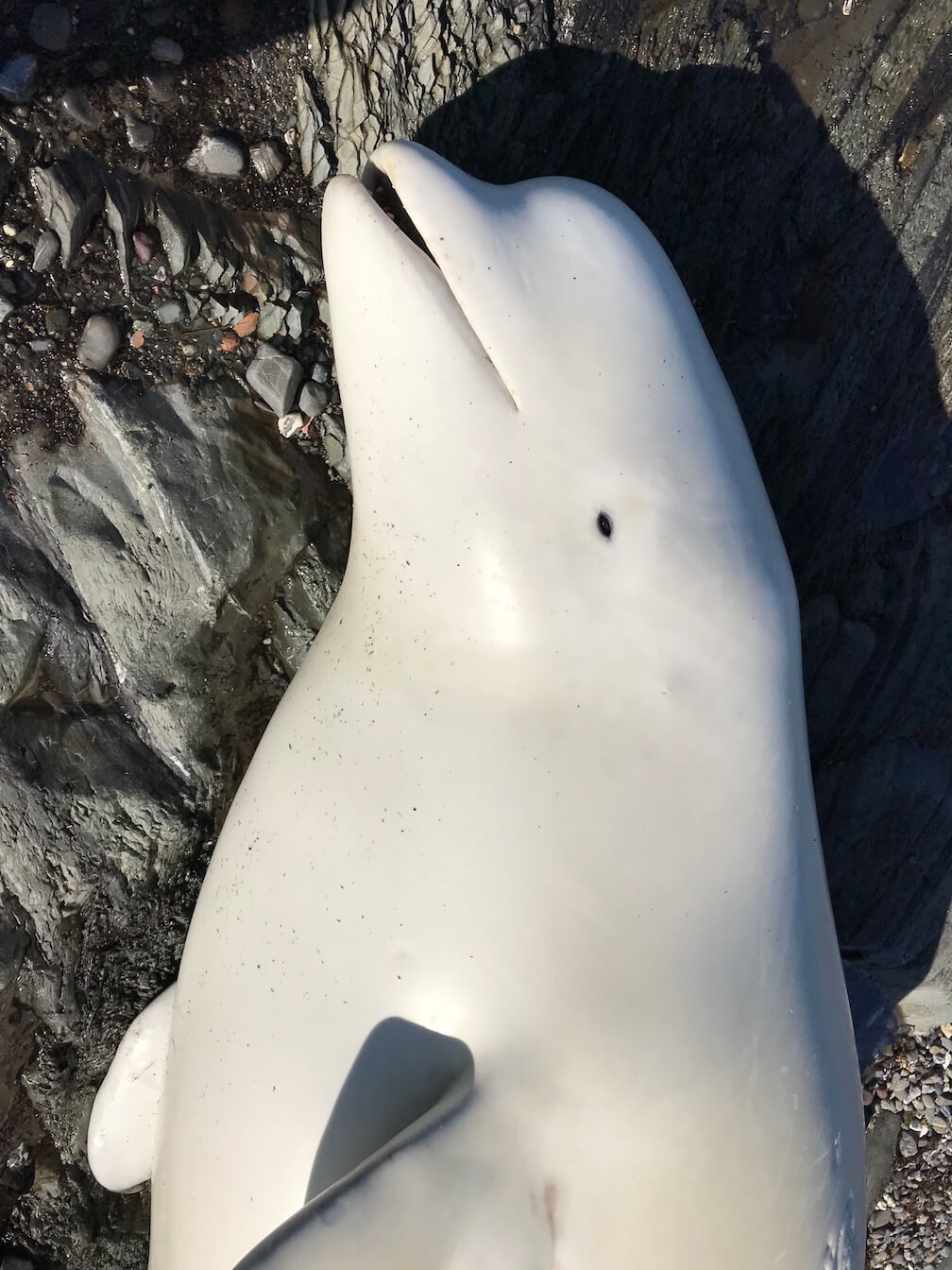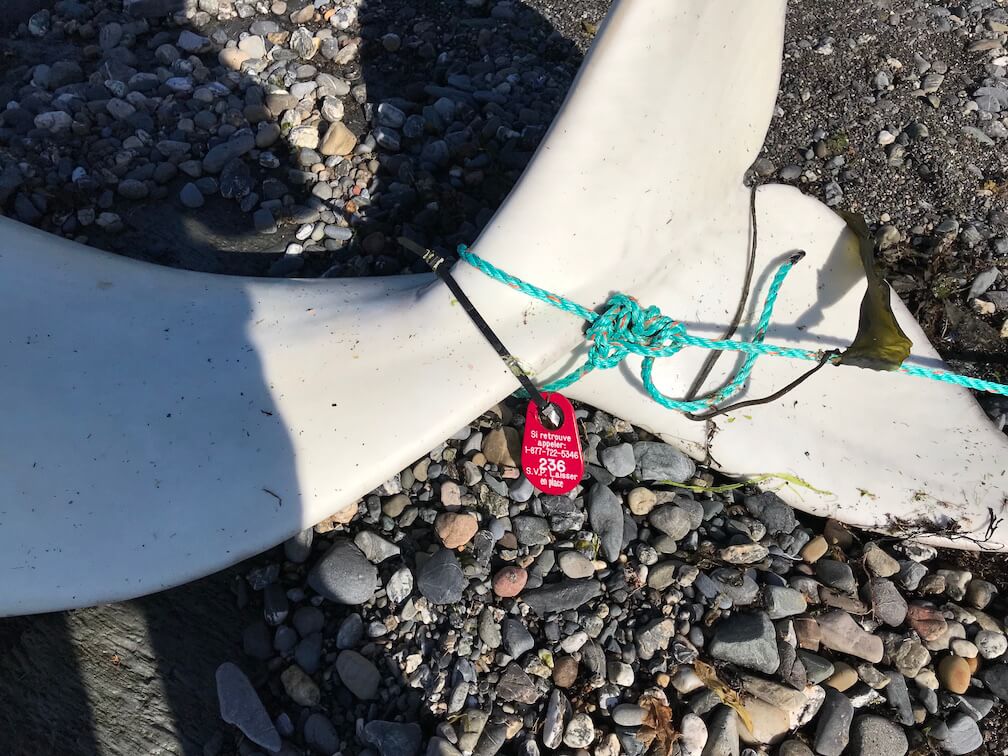Two beluga carcasses were found just two days apart in the Bas-Saint-Laurent region. The first carcass reported on July 9 by residents of Rivière-du-Loup was a newborn, while the one reported on July 10 by locals in Petit-Matane was an adult female. Although the two events are close together in time and space, there is no reason to believe that these two cases are related.
Thanks to the responsiveness of witnesses who were able to rapidly transmit information and photos pertaining to the carcasses, the (RQUMM) was able to confirm that they were belugas. A response plan was put into place, first to secure the carcasses and then to document the situation. One of the carcasses was transported to the Université de Montréal’s Faculty of Veterinary Medicine, while the other was sampled in the field in light of its advanced state of decomposition.
Calf carcass found in Rivière-du-Loup
The carcass, in a state of advanced decay, was discovered near the research station of the Marine Mammal Ecowatch Network (ROMM). A research assistant from the Group for Research and Education on Marine Mammals (GREMM) and a ROMM technician were able to assist the Network in documenting and securing the carcass. Thanks to the collaboration of the St. Lawrence National Institute of Ecotoxicology (SLNIE), samples were taken from the calf carcass in Rivière-du-Loup (skin, fat, muscles and lower jaw including teeth).
Stranded carcass in Petit-Matane
Once again, the Network was able to count on the invaluable cooperation of its employees and the general public. Witnesses of the situation were able to assist volunteers, who were mobilized to secure the carcass. They provided continuous monitoring of the situation and relayed important information to passers-by intrigued by the imposing 3+ m long carcass.
Securing the carcass proved challenging: several ropes were needed to attach the carcass to an anchor point and to ensure that it would not wash away with the tide.
Network volunteers returned at low tide in the early evening in order to reinforce the attachment made earlier in the day.
Given the very fresh state of the carcass, it was transported for necropsy at in Saint-Hyacinthe. Post-mortem examination of the carcass will provide a detailed portrait of the individual: age, genetic anomalies, diseases, etc. Until then, there’s no sense in making premature conclusions, as only the necropsy report can provide clarification on the reason(s) for this beluga’s mortality.
It is important to remember that, for the sake of safety and hygiene, it is important not to touch or handle a marine mammal carcass with one’s bare hands. Marine mammals can transmit diseases to humans.
In the case of Petit-Matane, the number of beluga carcasses found since the beginning of the year is now five, which is about average for the last few years.
To learn more
From the Sea to the Lab: The Journey of a Beluga Carcass (Whales Online, 2017)
Carcass Recovery Network (Whales Online, 2015)







